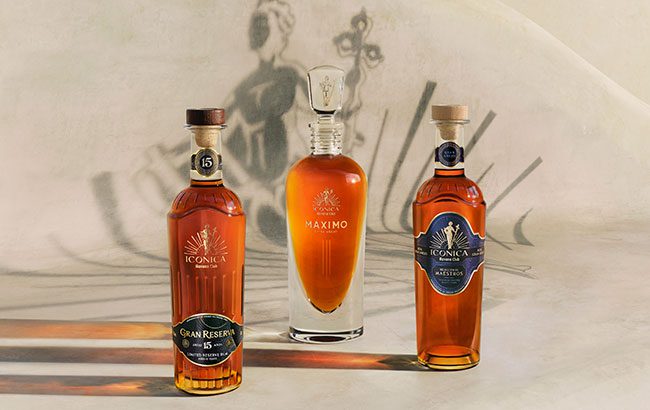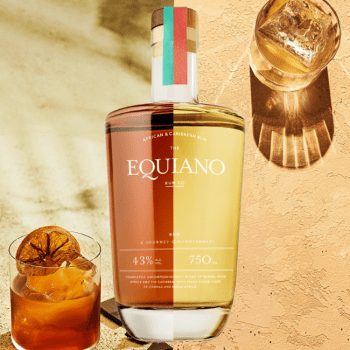The pros and cons of GIs for rum
By Nicola CarruthersRum producers are trying to bolster their countries’ industries by attaining geographical indication statuses. However, the process is not without its pitfalls.

*This feature was originally published in the March 2025 issue of The Spirits Business magazine.
Much like the rules that govern how Scotch, Tequila and Cognac are made, there are numerous regulations for making rum in certain regions that follow the standards set out in a geographical indication (GI). In France, this falls under the appellation d’origine contrôlée (AOC) for ‘rhum agricole’ (sugarcane-based rum produced in the French Caribbean islands). One of the benefits of having a GI is it raises consumer awareness of a nation’s local produce and its distinct qualities.
With GIs for rum in countries such as Jamaica, Cuba, Brazil (for cachaça), Saint Lucia, Madeira, Guadeloupe, Venezuela, Guatemala, and Guyana, you could argue that the rum industry is actually highly regulated. There are more rum GIs in the pipeline too, but it’s not without complications. In Barbados, three of the four distillers – Mount Gay, Foursquare and St Nicholas Abbey – had collectively agreed a GI for Barbados rum, however the outlier, West Indies Rum Distillery, does not agree with the proposal. It’s an issue that has been ongoing for the past five years, with no resolution in sight.
Ian Burrell, global rum ambassador, founder of the UK’s RumFest, and co-founder of Equiano Rum, notes the category as a whole can be misunderstood, with all rums put under one umbrella. He hopes to see rums categorised in their distinct regions, similar to how Scotch whisky has its own regional styles, with Speyside, Islay, the Highlands, and the Lowlands. “If Barbados rum was a subcategory, like Tequila, then we could say it was showing even better growth than Tequila,” says Burrell, who adds that regions such as Barbados and Jamaica are experiencing major growth. The rum boom in Barbados has also helped to attract new investment, with two new companies looking to open distilleries in the country, Burrell says. In 2023 Islay Scotch whisky maker Kilchoman revealed plans to build a rum distillery in Barbados at Bentley Mansion.
Burrell believes that GIs are important for giving value to local produce, preventing others from capitalising on the reputation of a nation’s rum.
“The geography of any spirit can play a major part to not only the flavour of it, but its authenticity as well, in a world where it’s so easy to copy and imitate products,” he says. “GIs strengthen particular brands, especially ones that are made in countries that are always fighting to get equal opportunities when it comes to trading.
“To have your geography as part of your DNA, as part of your marketing tool, is important because it’s yours, and you decide what it is, then you create the value. You own your value, as opposed to the value being created, given to you by somebody else. GIs are important; they work in so many other spirit categories. In rum, they’re not widely accepted, but it’s slowly but surely growing.”
A historic milestone for Saint Lucia came in January 2025, when the nation’s rum officially received Protected Geographical Indication (PGI) status. The application for a GI was submitted by the country’s only rum distillery, Saint Lucia Distillers, and could attract more distilleries to the island.
Meanwhile, in Cuba, Pernod Ricard-owned Havana Club is in the process of applying for a GI for Cuban rum with the EU. “This will ensure Cuban rum is recognised and protected in the European market, which accounts for a quarter of global rum consumption, and is valued at €2.2 billion (US$2.3bn),” Havana Club CEO Christian Barré told The Spirits Business in January 2025. Since 2013, all of the brand’s rums have held a protected designation of origin (DOP) in Cuba, which requires rum to be distilled in a column from molasses produced in the country. The initial liquid, known as aguardiente, must then be aged for two years, after which it is filtered and re-aged. The bottled rum must have an ABV between 37.5% and 41%.
The application for a GI in the EU has been in progress for three years, with Havana Club working alongside Cuba Ron and other rum brands from the country to ensure it meets all requirements.
“The main challenge has been aligning the Cuban DOP, which is already well-established, with the requirements of the GI system,” explained Barré. “While the Cuban DOP is highly respected and very close to the current EU regulations on spirits, it does not automatically grant protection in the EU.”

A GI for Tahiti rum is also in the works, according to Marotea Vitrac, who is president of the Défense de l’Indication Géographique Rhum Agricole de Polynésie Française, which represents four distilleries in Tahiti that all produce rum from sugarcane juice. Vitrac says there was interest in creating a GI to help local rums break out into international markets. “If we want to increase our income, we have to get the European market first because it’s easier for us, then we will have a lot of opportunities to export in the US, and Australia as well.”
The GI has been a complicated and time-consuming process, says Vitrac, having been in development for five years, but it is hoped that it will be formalised within the next year, following approval from the government.
“It’s very important for us to be protected because in Tahiti, anyone can come and take a bottle with rum and write on the bottle ‘rum from Tahiti’ and sell it. This will decline the quality of our products.”
Ageing rum in Jamaica
Last year, the GI for Jamaican rum was amended by the Jamaican Intellectual Property Office to ensure that ageing of the liquid only took place in Jamaica.
National Rums of Jamaica (NRJ) has taken issue with the changes, stating that they would have a “profound impact” on its business. NRJ operates the Long Pond and Clarendon distilleries, which have been producing rum for more than 200 years.
“Our customers, who have been ageing our rums as part of their own production processes, are trusted partners, who have helped develop this industry alongside us for decades. Among them are prestigious Jamaican brands,” says Martha Miller, CEO of NRJ. “The consequences of this modification would be devastating for our companies, our distilleries, and the communities that rely on them.”
Miller says more than 85% of the company’s sales “come from rums produced in the traditional way – either double-aged or aged at their final destination”.
She adds that a change would be “devastating”, and force the company into a “completely different operating model – one that cannot be altered in just a year but would require at least 10 to 15 years, and would need a massive investment to implement. It would mean fundamentally restructuring how we produce rum.” As such, Miller says NRJ is “already taking action through various appeal processes to challenge this decision”.
Miller emphasises that the original GI that was designed and agreed in 2016 was “reputation-based”, and built on practices that have “established the prestige and quality of Jamaican rum”. “A reputation-based GI exists to protect Jamaican producers and the country, grounded in these time-honoured practices,” she says. “We believe that distilleries like Long Pond and Clarendon have played a significant role in building the outstanding image and quality that Jamaican rum represents. Our hope is that the GI will safeguard this for all operators, not just a select few. This way, everyone producing rum based on their own heritage and traditional methods can continue to do so with full transparency and a sense of community, benefiting their companies, local communities, and the country of Jamaica.”

However, Burrell believes the Jamaica GI has now been “strengthened”. Producers who buy Jamaican rum and age the liquid outside of the country will no longer be able to call their products ‘Jamaican rum’ but they can still state ‘distilled in Jamaica’ on the label, he says. “The value of Jamaica rum is in Jamaicans’ hands and in Jamaica, as opposed to being created in Liverpool or France or in Germany,” explains Burrell.
“That is now helping Jamaican rum to grow. So when people do buy Jamaican rum, they know about its authenticity, where it’s made, how it’s made. If they see an age claim on the bottle, the youngest product in that blend is what it states, as opposed to blends of rums out there that will have mysterious age claims, then even have the word ‘Jamaica’ on the label, and you don’t know that they’re true Jamaican rums. So the protection of Jamaica rum is now helping Jamaican rum as a category.”
Innovation can often be seen a lifeblood for the industry, but when it comes to experimentation, strict regulations can sometimes be seen as an issue, For Paul Timon, brand ambassador at Rhum Montebello, the GI for rum in Guadeloupe creates challenges for distillers in creating unique flavour profiles.
Administrative challenge
Speaking during a seminar at the Mondial du Rhum summit in Paris in February, Timon said: “In Guadeloupe, we follow the GI, we use the same cane and barrel to age, the problem is we find similar profiles, we can’t be extreme in developing new flavours.”
He notes that one “bad point” of the GI is the inability to experiment. “We need to open a new door in the classification to bring new techniques and create a new shift, and turn a new page in the flavour profile. I’m not against the GI or AOC [but] we haven’t changed for it over 10 years, and I think it’s time for it.”
Ulrich Adam, outgoing director general of trade body Spirits Europe, describes a “good GI” as one that “keeps the value, keeps an evolution of innovation where you can then add a new thing”, pointing to Scotch whisky’s amendment to allow cask finishing in vessels such as ex-Tequila barrels.
As a category, rum is more difficult when it comes to regulations compared with other spirits segments, says Adam. “It’s a practical administrative challenge to get the producer groups to work together, and to self-regulate them in a functioning way.”
While a GI can provide legal protection and global recognition for rum makers from distinct regions, there remains a challenge to unite distillers on the same set of rules. But if they can put aside their differences, the opportunities to expand their reach are undoubtedly high.
Industry insights
How is globalisation changing the rum market?
Christian Barré – CEO, Havana Club International
“Globalisation is a driving force in introducing new audiences to rum. As international brands like Havana Club spearhead this growth, drinkers are developing an appreciation for region-specific styles that indicate authenticity.
A case in point is Cuban rum, with its strict regulations, rich heritage and exceptional craftsmanship. It’s a benchmark for quality – an increasingly important purchase motivator for today’s rum drinkers. We’re seeing this appreciation not just in Europe’s historic strongholds, but within emerging markets such as China, India and Turkey. As our global expansion continues and consumers develop a deeper understanding of rum, we’re creating a diverse and dynamic category in which international and independent producers can thrive.”
Related news
Aluna Rum names new UK distributor
